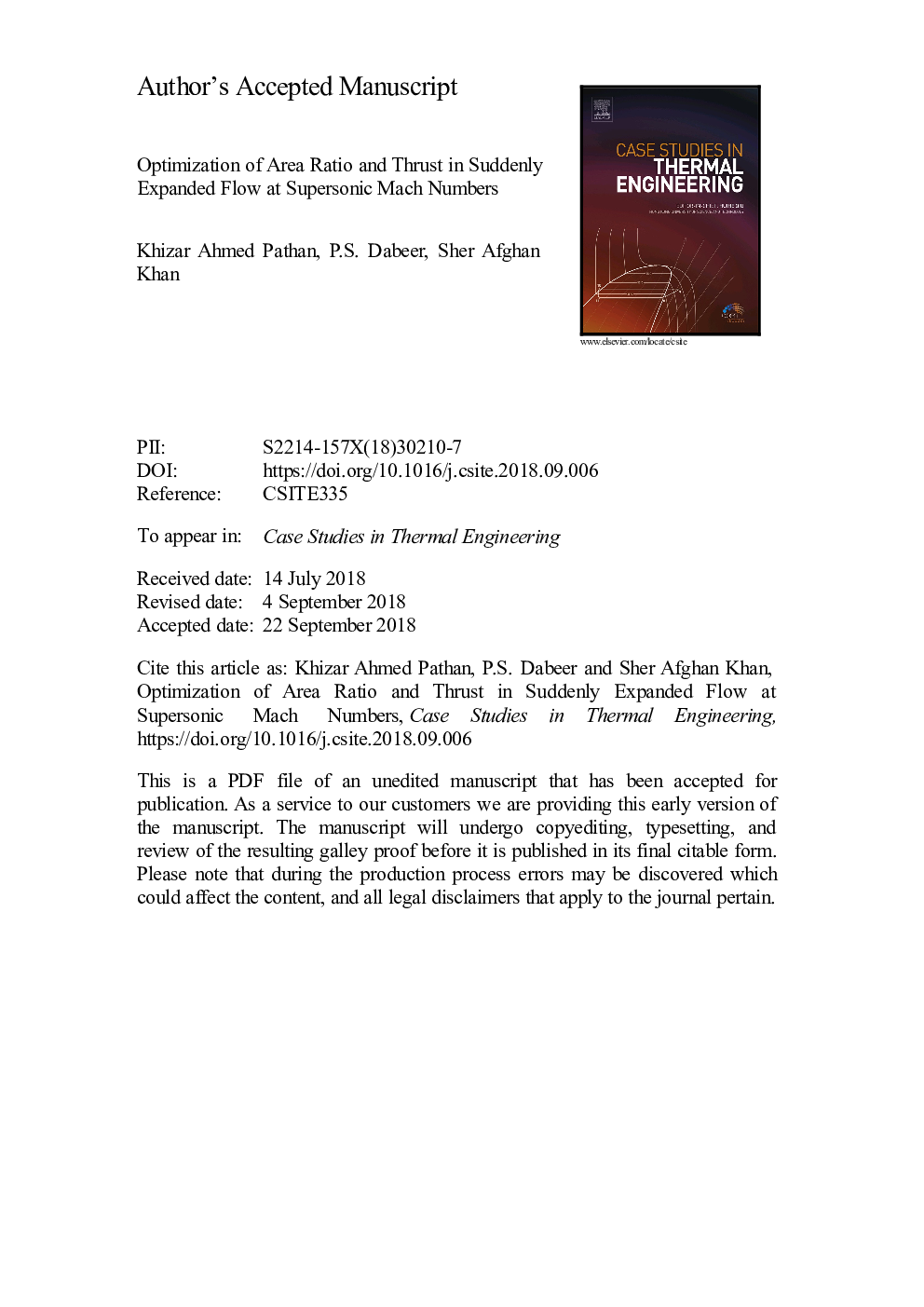| Article ID | Journal | Published Year | Pages | File Type |
|---|---|---|---|---|
| 11003737 | Case Studies in Thermal Engineering | 2018 | 6 Pages |
Abstract
In this investigation the flow field has been computed by the numerical approach using Computational Fluid Dynamics (CFD) Analysis to investigate the efficacy of the supersonic Mach numbers due to the flow from supersonic nozzle exhausted in a larger circular duct and the corresponding thrust force created due assess the flow development in the circular pipe, its measurement and the magnitude. For this study the nozzles were modeled using academic licensed ANSYS Workbench software. The nozzles were modeled for the Mach numbers 1.5, 2.0 and 2.5. The flow from the nozzles was numerically simulated for nozzle pressure ratios (NPRs) in the range from 2 to 8, and the area ratios of the study were 2, 4, 6, 8 and 10. The simulation results were compared for geometrical and the kinematical parameters. The results indicate that the pressure in the base corner of enlarged duct is influenced by the level of expansion (i.e. Nozzle pressure ratio), inertia level (i.e. Mach number) at the nozzle exit and the relief available (i.e. area ratio) to the shear layer. If the maximum thrust is the aim then the optimum area ratios should be considered. Lower area ratio is not suitable for higher NPR and higher area ratio is not suitable for lower NPR. The higher area ratio provides more space to expand compressed air. Also, the lower area ratio will offer minimum base drag. The base drag is strongly influenced by the area ratio up to certain limit. If the area ratio is again increases then there is no effect of increase in the area ratio on the base drag and Thrust. As the Mach number increases for the same Nozzle pressure ratio and the area ratio, the net thrust force also increases. From the obtained results the optimum area ratio can be selected to maximize thrust for a given Nozzle pressure ratio and Mach number.
Keywords
Related Topics
Physical Sciences and Engineering
Engineering
Mechanical Engineering
Authors
Khizar Ahmed Pathan, P.S. Dabeer, Sher Afghan Khan,
